The magnificent stone basilica has been a fixture of the ancient city for 1,500 yearswith frequent additions and renovations.
The spiritual structure has survived empires and transitioned religions.
Read on for the history of the Hagia Sophia, a fascinating piece of sacred architecture.
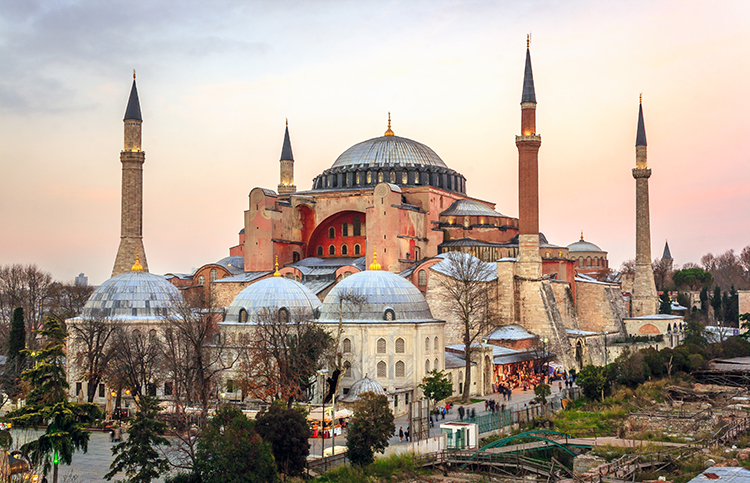
Photo:Stock Photosfrom MURAT CAN KIRMIZIGUL/Shutterstock
Ancient Antecedents
A frieze with lambs from of the basilica built by Theodosius II in 415 CE.
The first Christian emperor, he moved his capitol from Rome to Byzantium in 324 CE.
The city was then renamedConstantinople.

A frieze with lambs from of the basilica built by Theodosius II in 415 CE. (Photo: Georges Jansoone JoJan viaWikimedia Commons[CC BY-SA 3.0])
The Bishop of Constantinople became second only to that of Rome in power and prestige.
The Roman emperors who followed continued to make additions and repairs to what was called the Great Church.
(Photo:Wikimedia Commons[Public domain])
Among his major legacies is the present-day Hagia Sophia.
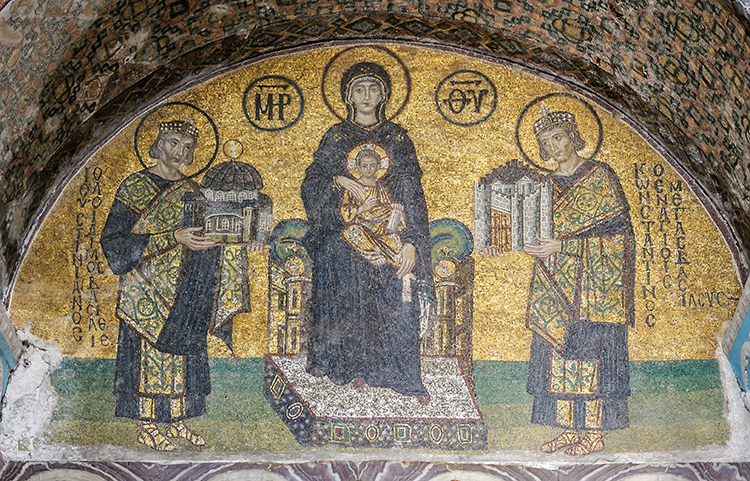
A mosaic depicting Mary, the Christ Child, Emperor Justinian the Great, and Emperor Constantine I. (Photo:Wikimedia Commons[Public domain])
After the Nika Revolt destroyed the Great Church, Justinian almost immediatelyordered constructionof a new one.
Under the architects Anthemius of Tralles and Isidorus of Miletus, a new building was swiftly constructed.
The architects were mathematicians, and the church drew upon their knowledge of engineering and geometry.

Jaharis Byzantine Lectionary, an illuminated manuscript in Greek likely created for the Hagia Sophia circa 1100. (Photo:The Metropolitan Museum of Art[Public domain])
They created an enormous lofty stone dome supported by two flanking smaller semi-domes.
The interior features three aisles and a second-floor gallery.
The many columns which help support the building were imported from other buildings across the empire.
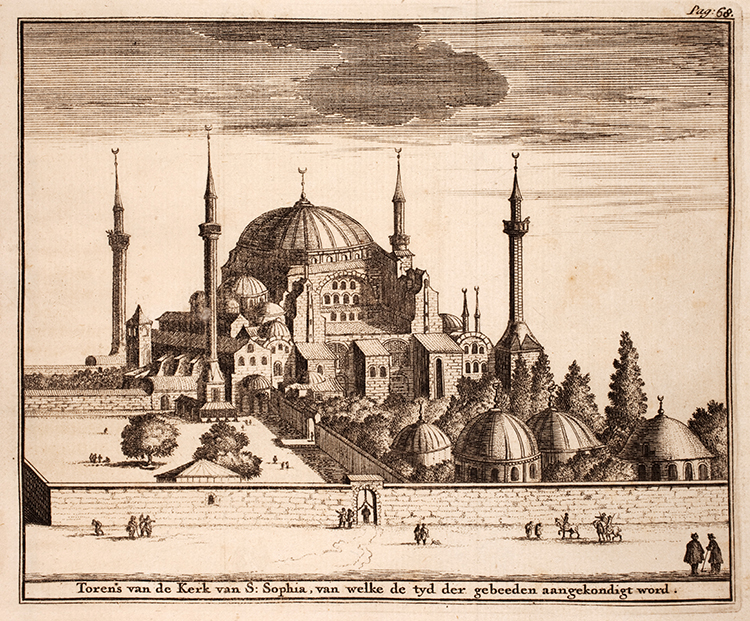
Hagia Sophia as a mosque with minarets in 1718. Engraving by Dutch artist and writer Adriaan Reland. (Photo:Wikimedia Commons[Public domain])
The opulent interior of the church was decorated further by Justin IIJustinian’s heirwho added gold mosaics.
An Imperial Door was reserved for the emperor’s personal use.
Between the 10th and 12th centuries, many mosaics were added or altered.
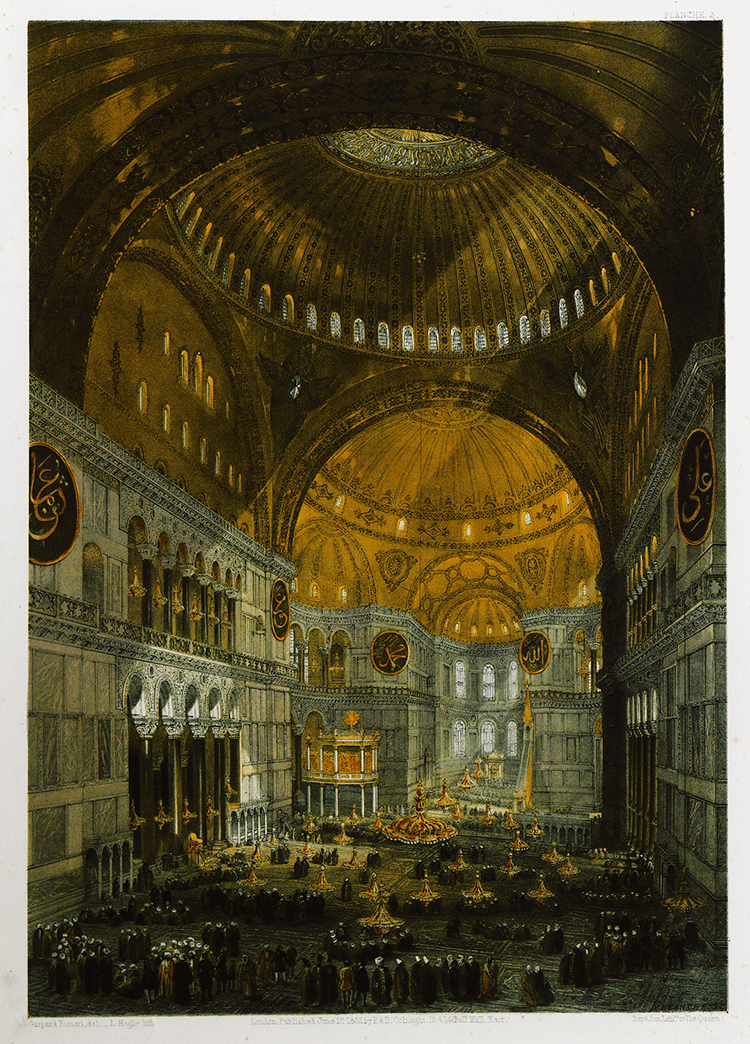
Interior of the Hagia Sophia in an 1852 engraving by Gaspare Trajano Fossati. Hagia Sophia was a mosque in the Ottoman Empire’s capital. (Photo:Wikimedia Commons[Public domain])
Other additions had pagan origins.
Jaharis Byzantine Lectionary, an illuminated manuscript in Greek likely created for the Hagia Sophia circa 1100.
In 1204, the city of Constantinople was sacked, including the Hagia Sophia.
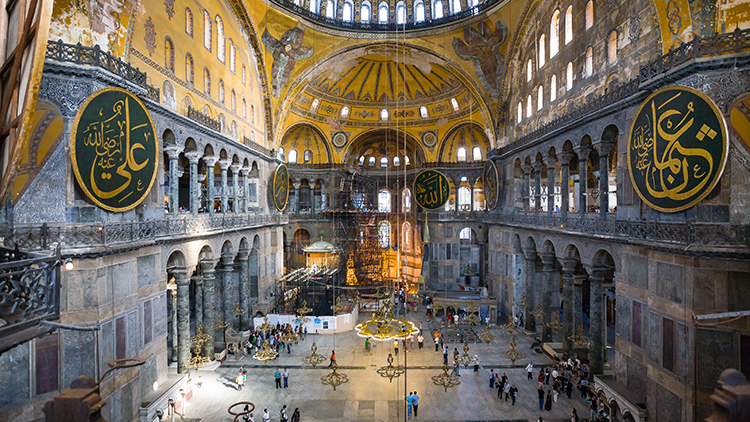
Interior of the Hagia Sophia, photographed in 2010 while the building was still a museum. (Photo:Stock Photosfrom VVOE/Shutterstock)
The interior was desecrated; the empire would not gain control of the city back until 1261.
Claimed by Ottoman Rule
Hagia Sophia as a mosque with minarets in 1718.
Engraving by Dutch artist and writer Adriaan Reland.
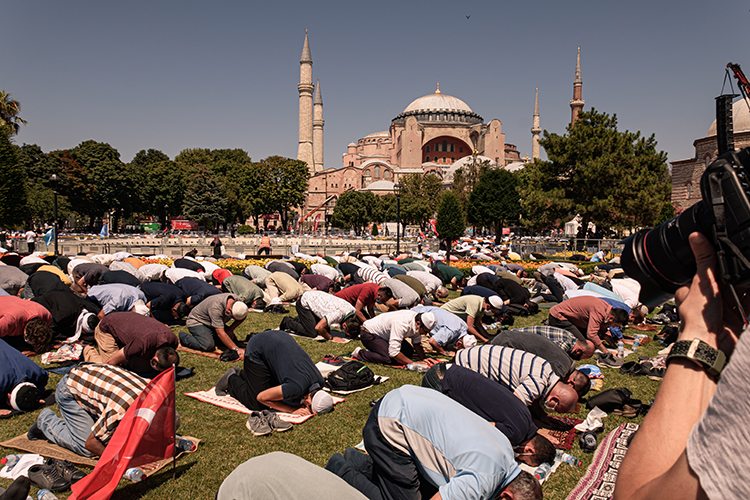
In July 2020, worshippers attend prayer outside the Hagia Sophia upon its reconversion to use as a mosque. (Photo:Stock Photosfrom MITREPHOTOGRAPHY/Shutterstock)
During this conquest, the already old building was further damaged and looted.
Architecturally, the change in faiths dictated several new additions.
A minaret was also added, from which the call to prayer sounded.
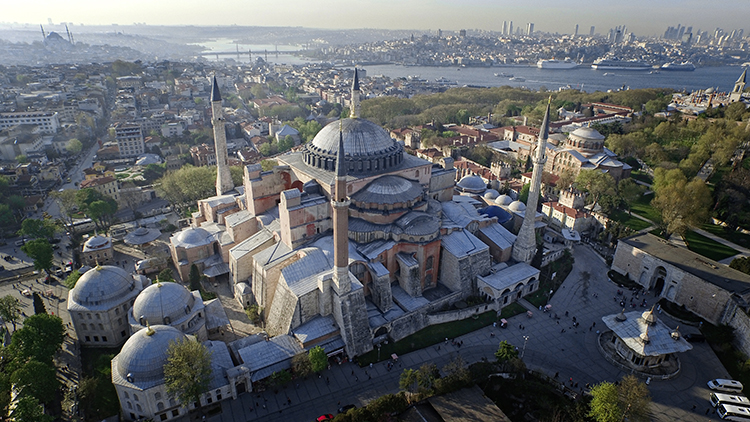
Photo:Stock Photosfrom MURATTELLIOGLU/Shutterstock
Interior of the Hagia Sophia in an 1852 engraving by Gaspare Trajano Fossati.
Hagia Sophia was a mosque in the Ottoman Empire’s capital.
Constantinople became the city of Istanbul.
In 1934, under President Kemal Ataturk, the Hagia Sophia was secularized.
Throughout most of the 20th century, frequent repairs were necessary.
Now, over three million people a year visit the famous site.
In July 2020, worshippers attend prayer outside the Hagia Sophia upon its reconversion to use as a mosque.
In the past ten years, calls to reconvert the secular building back into a mosque have grown.
The move has ignited muchtension and controversy.